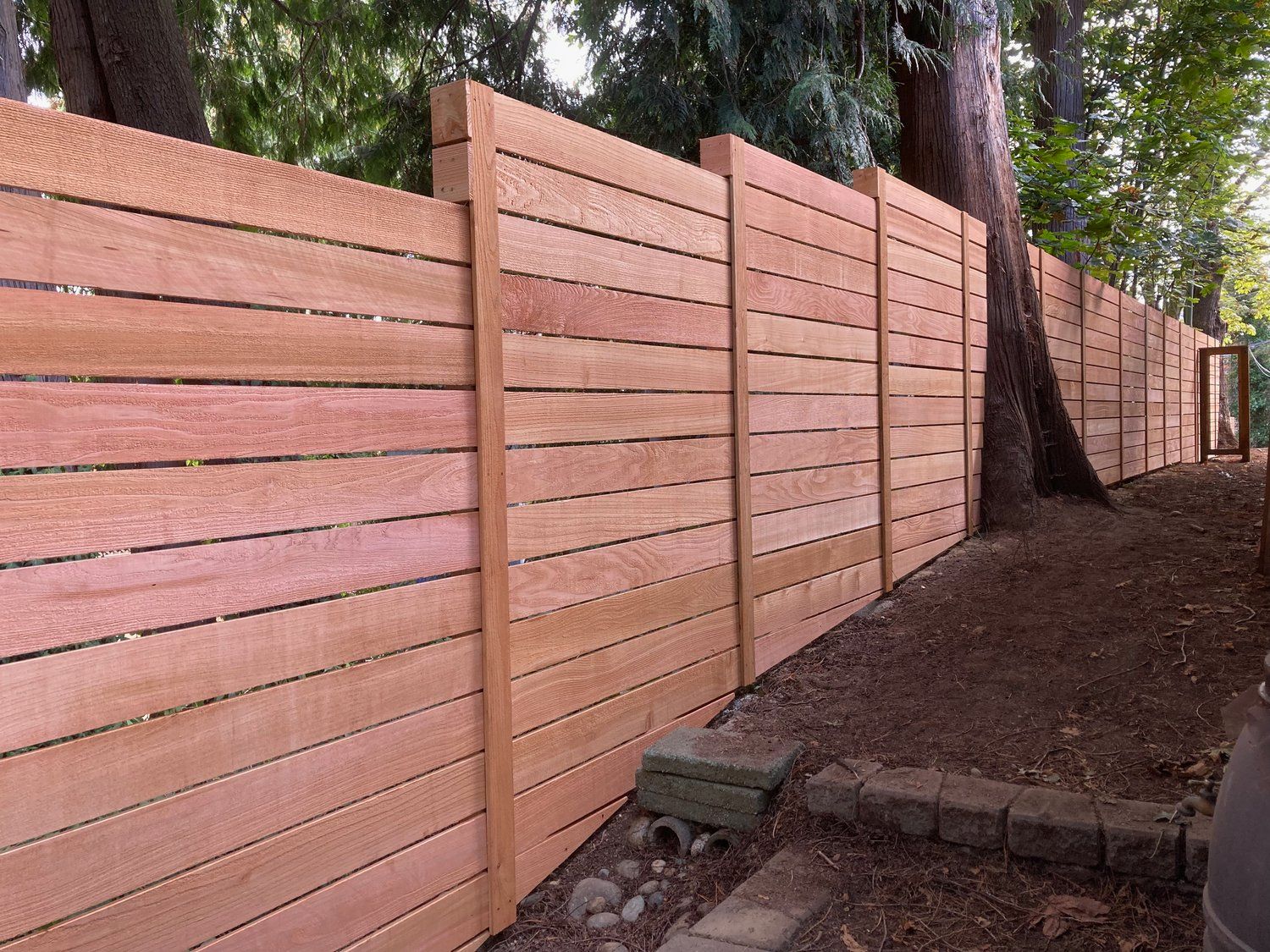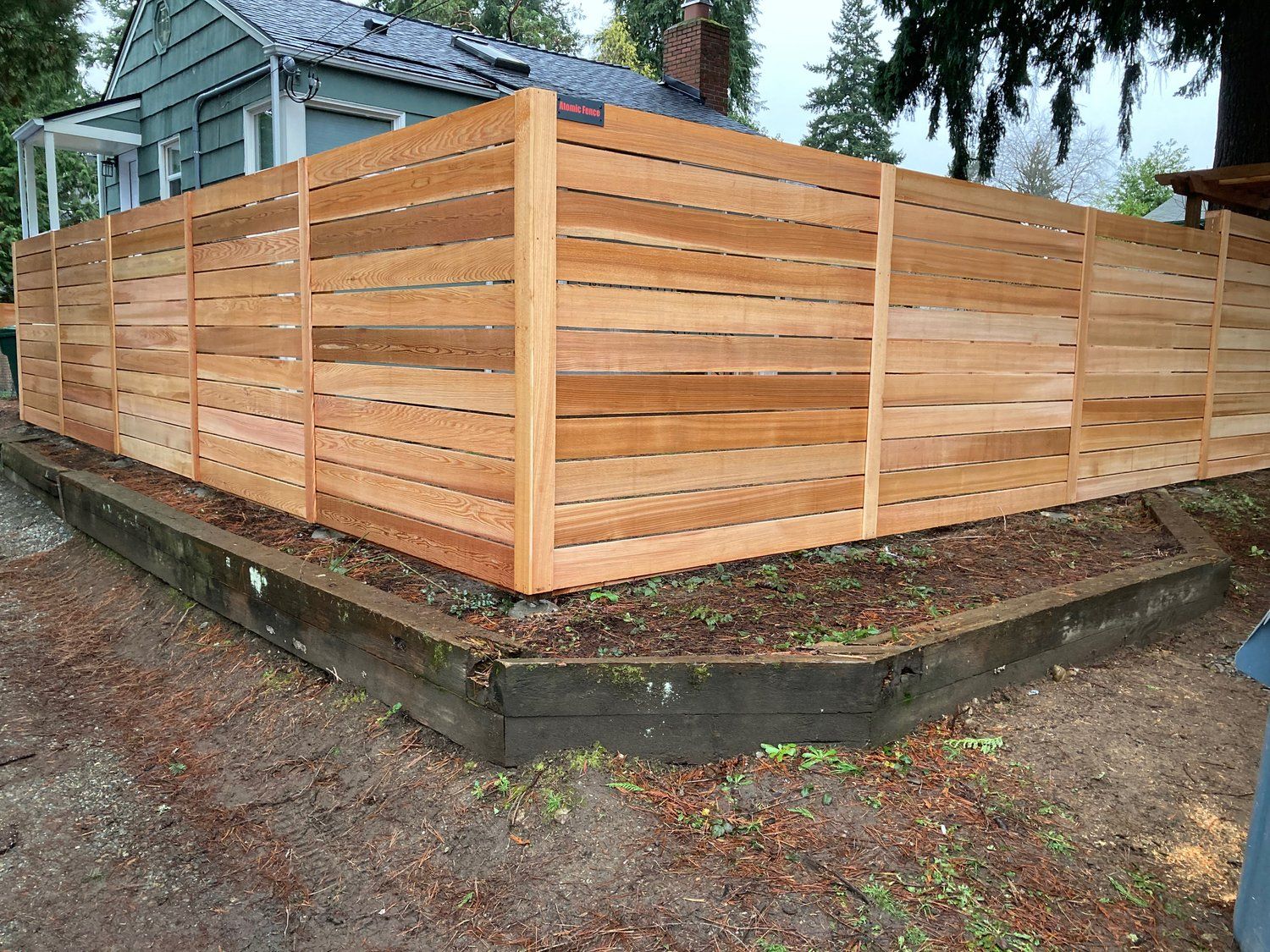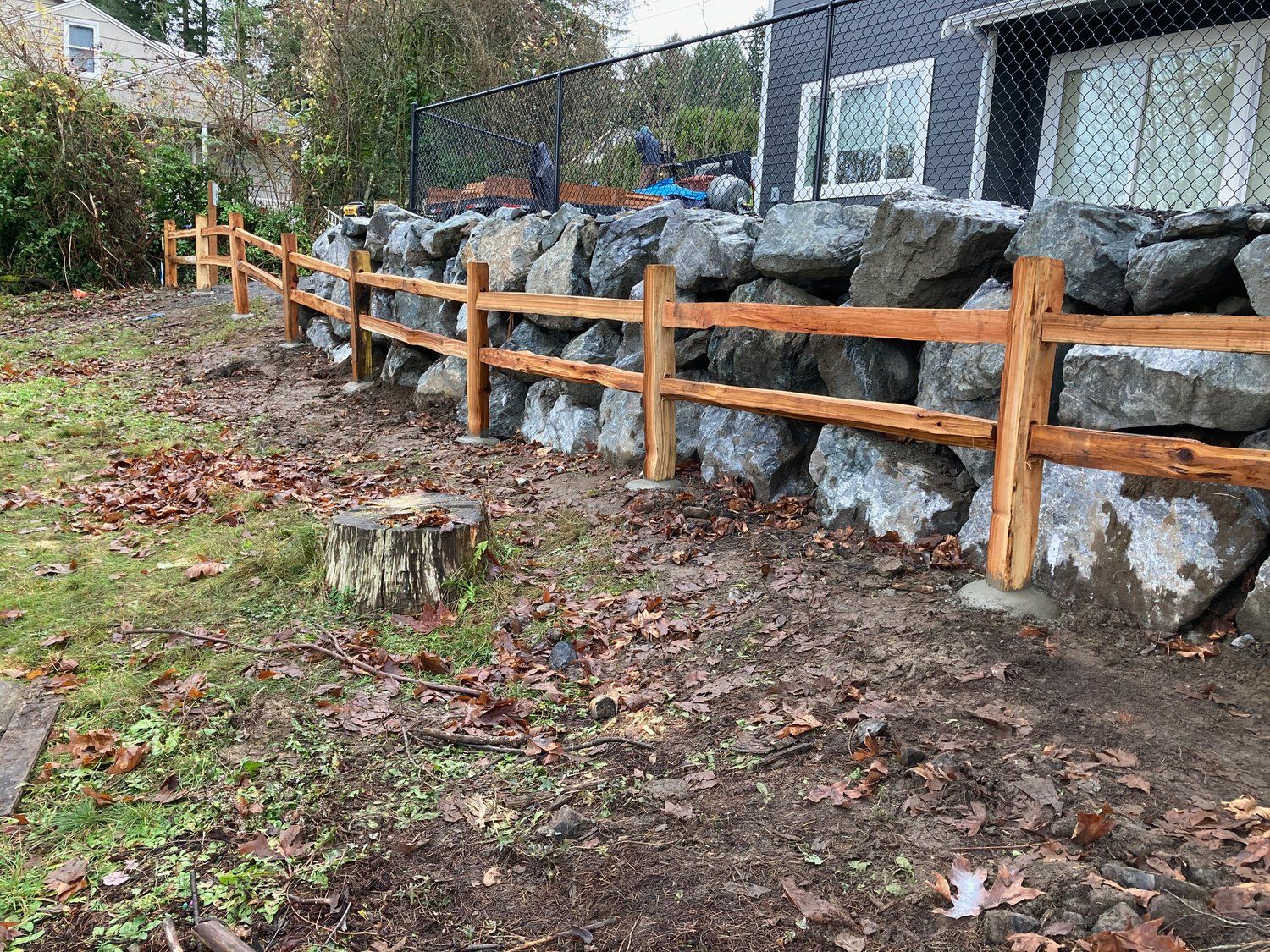Navigating the Maze of Fence Regulations in Snohomish County
Are you planning to build or renovate a fence in Snohomish County and wondering where to start with the complex regulations? You’re not alone. Many homeowners find themselves puzzled by the intricacies of local codes and guidelines.
Building a fence is not just about choosing the right materials or design. It’s also about understanding and adhering to specific legal requirements. These can vary significantly based on your property’s location, the fence’s height, and its purpose.
In Snohomish County, the rules governing fence construction are detailed and specific. They cover everything from height restrictions and setback requirements to special considerations for corner lots and historical areas. Whether you’re installing a simple wooden fence or considering an elaborate design, knowing these regulations is crucial to ensure your project is compliant and hassle-free.
In this guide, we’ll walk you through the essential aspects of Snohomish County’s fence regulations. We aim to provide clarity and guidance, helping you navigate these rules with confidence.
What are the Local Regulations for Snohomish County fence height?
You can have fences up to 8 feet tall in Snohomish County, but if they have masonry or concrete, that part can’t be higher than 6 feet.
Do I Need a Permit for My Fence in Snohomish County?
In Snohomish County, you do not need a permit to build a fence if it’s eight feet high or less, there are no section panels over 30 square feet, and it is not built in a flood hazard or other critical area.
How does fence height impact permit requirements?
The requirement for a permit is primarily determined by the height of your fence. Fences over eight feet high usually require a permit. This regulation ensures that taller structures, which can have more significant impacts on aesthetics and safety, undergo proper review and approval.
What are the general conditions where a fence permit is not required?
In Snohomish County, you generally don’t need a permit for your fence if it’s eight feet high or less. This simplifies the process for most residential fences, allowing homeowners to proceed with their fencing projects without the additional step of obtaining a permit.
Special Considerations for Fence Permits
Are there any exceptions in flood hazard areas or critical areas?
Even if your fence is eight feet high or less, special considerations apply in flood hazard areas and critical areas. In these sensitive zones, your fence must still comply with all other code requirements, including those specific to flood hazard and critical areas. This ensures that fencing does not adversely affect these environmentally critical spaces.
How Close Can I Place My Fence to the Property Line?
In Snohomish County, the placement of a fence in relation to the property line varies based on the fence’s height.
For fences less than six feet high or less:
For fences and freestanding walls that are six feet tall or less, if a landscaped area is required, they need to be set back by the width of that landscaped area. However, if no landscaped area is required, these structures can be placed without a setback. This is contingent on the following conditions:
- Corner lot fences/walls must allow clear visibility for traffic.
- Fence height on retaining walls is measured from the uphill side.
- Fences up to 6 feet can have up to three wire strands on top.
- Special open wire mesh fences can exceed height limits for security purposes in specific areas.
What if my fence is over six feet high?
For fences and walls over six feet, the setback requirements are more stringent. They must meet either the required building setback or the width of any required or approved landscaped area, whichever is less.
These rules are in place to maintain the aesthetic and structural integrity of the area. For fences and freestanding walls taller than six feet, the setback should equal the width of any required landscaped area.
What if no landscaping is mandated?
If no landscaping is mandated, these structures still need to meet certain setback regulations based on your specific zoning area.
Additionally, site-obscuring fences and freestanding walls over six feet tall must comply with the required building setback or the width of any required or approved landscaped area, whichever is less. This is particularly important to ensure that your fence does not encroach on public space or interfere with utility services.
Measuring Fence Height: What You Need to Know
How is fence height measured in Snohomish County?
In Snohomish County, the measurement of fence height is a precise process. The height of a fence is determined from its topmost point to the ground level. This includes any part of the fence, whether it’s the top surface, board, rail, or wire. Unique consideration is given when a fence is constructed atop a retaining wall. In such cases, the height measurement is taken from the uphill side of the wall. This approach ensures an accurate and fair assessment of the fence’s height in relation to its surrounding landscape.
What if the fence is built on a retaining wall?
The height of such a fence is measured from the uphill side of the retaining wall. This method ensures the fence height accounts for any additional elevation provided by the retaining wall. The regulation ensures that fences on retaining walls do not inadvertently exceed legal height limits due to the added elevation of the wall.
What Are the Rules for Fences on Corner Lots?
In Snohomish County, specific rules apply to the construction of fences on corner lots, mainly focusing on maintaining clear vision for safety reasons. Fences in these areas must adhere to vision clearance requirements to ensure they do not obstruct the view of drivers and pedestrians at intersections. This involves maintaining a triangular area free from obstructions higher than 42 inches above the established street grade.
For fences on corner lots, where the sides forming the street corner angle measure 40 feet or less, no fences or freestanding walls more than 4 feet in height are permitted within this triangular vision clearance area. This regulation aims to prevent potential hazards caused by obstructed views at crucial points along roads and walkways.
These rules are essential for maintaining safety in neighborhood areas where traffic and pedestrian movement intersect. Homeowners planning to erect fences on corner lots must carefully consider these regulations to ensure compliance and avoid creating any safety risks.
Specifics on Wire and Mesh Fences
What are the regulations for wire strands on fences?
Snohomish County permits the addition of up to three strands of wire on fences that are six feet in height or less. This allowance caters to homeowners who might need extra security or containment features without needing a taller fence structure. These strands must be integrated into the design of the fence while ensuring compliance with the overall height restrictions.
Can open wire mesh fences exceed maximum heights in certain areas?
Yes, open wire mesh fences in Snohomish County can exceed the standard maximum heights in specific circumstances. These fences are permitted to be taller around playgrounds associated with private and public schools, parks, public facilities, industrial and commercial uses, transmitter and transformer sites, and government installations. This exception is primarily for security or public safety reasons, allowing these areas to have more robust fencing solutions for protection and containment.
 Fence Regulations in Different Land Use Areas
Fence Regulations in Different Land Use Areas
How do fence regulations vary in residential, commercial, and public areas?
In residential areas, fence regulations prioritize aesthetic appeal and privacy while maintaining neighborhood uniformity. Commercial and industrial areas often have different height allowances, reflecting the need for enhanced security and operational functionality. Public spaces, such as parks and schools, might permit taller fences for safety and security reasons.
What special rules apply to fences in the Historic District?
In the Historic District, fence designs must align with the City of Snohomish Design Standards and Guidelines. This ensures that fences complement the historic character and architectural style of the area. Specific materials and designs might be required to preserve the historic aesthetic.
Key Points on Electrical and Security Fences
What are the specific requirements for electrical fences?
Electrical fences in Snohomish County are subject to specific safety standards. They must be located at least two feet from the property line, not be in the right-of-way, and use an interrupted current flow. Additionally, they are required to have a “U.L. Approved” seal and be clearly marked as electrified at regular intervals.
id=”security”
When are security fences with open wire mesh allowed?
Open wire mesh or similar type fences can exceed standard height limits in specific areas where security or public safety is a concern. This includes peripheries of playgrounds, schools, parks, public facilities, and certain industrial and commercial sites. These exceptions accommodate the unique security needs of these locations.
Retaining Walls and Rockeries: Compliance and Permits
What are the regulations for retaining walls and rockeries?
In Snohomish County, the regulations for retaining walls and rockeries are comprehensive. They must comply with the City of Snohomish Design Standards and development regulations. There’s no maximum height limit, but the height should be the lowest necessary for the intended purpose. If a wall or rockery exceeds the maximum building height for the zone, it requires review and approval by the Planning Director or designee.
When is a retaining wall permit required in Snohomish County?
Permits are generally required for all retaining walls. The application must include a detailed site plan, showing the entire project site, property lines, nearby structures, and topography. Walls exceeding four feet in height typically require a Type 2 permit, involving a geotechnical report, structural calculations, and a drainage system plan. There are exemptions, such as for walls two feet or less in height or those within new plats approved by the City.
Handling Variances and Unique Situations
How does one request a variance from standard fence regulations?
Requesting a variance from standard fence regulations involves processing the request as a minor variance as outlined in SMC 14.70.020. This typically requires submitting a detailed application, outlining the reasons for the variance and how the proposed structure will comply with or deviate from existing regulations. The decision is made based on specific criteria, ensuring that any deviation doesn’t compromise safety or aesthetic standards of the area.
Snohomish County References
Snohomish County Planning and Development Services: Assistance Bulletin
Snohomish County Information: Permits, Applications, and Forms
Snohomish County Codes: 30.28.040 Fences and freestanding walls
Washington State Fence Laws: Chapter 16.60 RCW
Conclusion
Navigating the world of fence regulations can be intricate, especially when balancing requirements from Snohomish County, Washington State, and any specific city guidelines. It’s crucial to ensure that your fence not only meets local standards but also aligns with state regulations. This layered approach ensures your fencing solutions are both compliant and aesthetically pleasing.
If you’re considering a new fence or have questions about compliance, Atomic Fence is here to help. We specialize in crafting custom fences that meet all regulatory requirements while enhancing your property’s beauty and functionality. Reach out to us, and let’s make your fencing project a seamless and successful endeavor!
Frequently Asked Questions About Snohomish County Fence Regulations
Do I need a permit for building a fence in Snohomish County?
A permit is not required for fences eight feet high or less, except in specific areas like flood hazard zones.
How close can I place my fence to the property line?
Fences six feet high or less can be placed up to the property line, with certain conditions regarding corner lots and retaining walls.
Are corner lot fences subject to special regulations?
Yes, they must meet vision clearance requirements for safety.
How is fence height measured in Snohomish County?
Height is measured from the ground to the topmost part of the fence, considering ground level differences.
Can I build higher fences for security purposes?
Yes, in certain areas like school playgrounds and public facilities, higher open wire mesh fences are allowed.
What are the rules for retaining walls and rockeries?
These require permits and must follow city design standards, with height considerations based on functionality.
How can I request a variance from standard regulations?
Variances can be requested as a minor variance, following specific city guidelines.
Should I also consider Washington State and city-specific regulations?
Absolutely, it’s important to ensure compliance with both state and local city regulations.
Are there different rules for fencing around swimming pools?
Safety regulations often dictate specific fencing requirements around pools, including height and gate mechanisms.
What should I do if my property borders a conservation area?
Fencing near conservation areas may have additional restrictions. It’s crucial to check with local authorities.
Can Atomic Fence assist with obtaining the necessary permits?
Yes, Atomic Fence can guide you through the permit process, ensuring all regulations are met. Call (425) 405-2218
How can I ensure my fence is environmentally friendly?
Explore sustainable materials and eco-friendly designs. Atomic Fence can provide recommendations based on your preferences and needs.







 Fence Regulations in Different Land Use Areas
Fence Regulations in Different Land Use Areas
